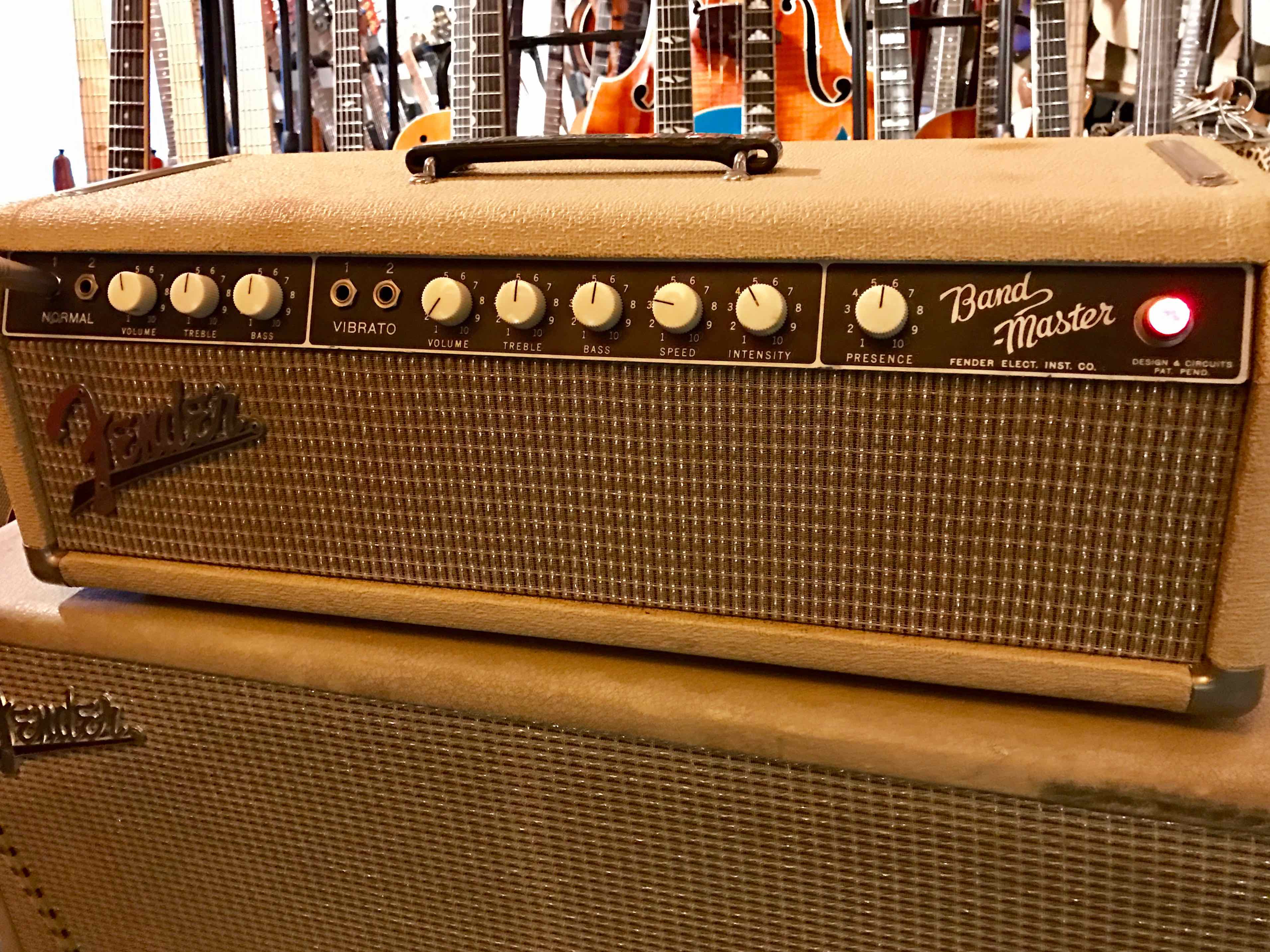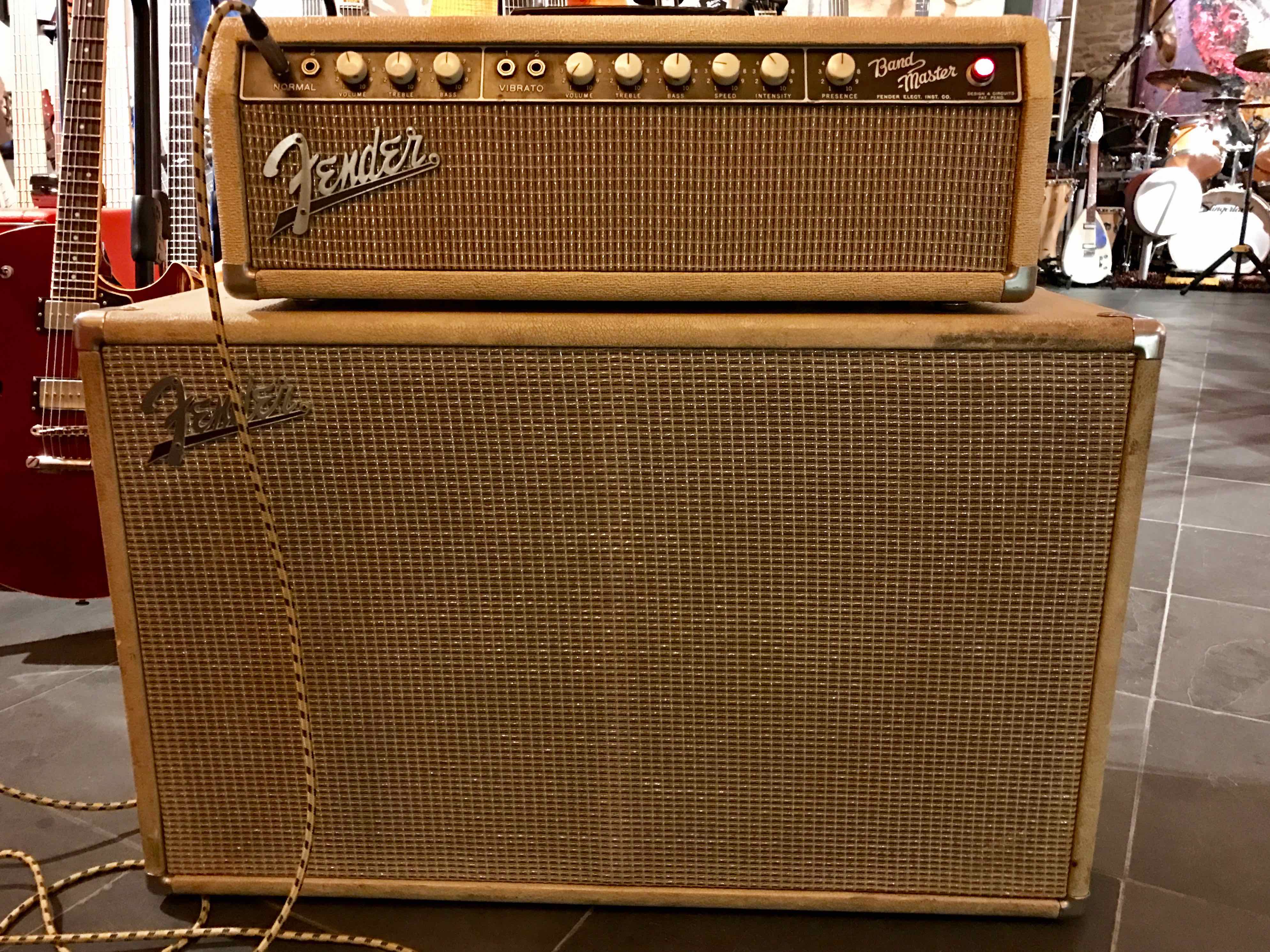
It exhibits a sparkling, harmonically rich tone at low and moderate volumes. It sounds great, responding beautifully across the frequency spectrum. In The Soul of Tone, Wheeler writes that:įor starters, it’s powerful, it’s loud, and it’s sensitive to the player’s touch. Listing the original 4×10” Bassman’s features, however, doesn’t really convey what a landmark in the history of instrument amplification it really was.

#1960 FENDER BANDMASTER PLUS#
The new narrow-panel version of 1955 also featured more controls-bass, treble and presence knobs, plus standby and ground switches-that were a significant tonal improvement over the sparse control layout of the earlier TV-front and wide-panel versions.

Indeed, the amp appeared in the February 1955 price list with the notation that “While its characteristics have been designed to accommodate string bass, at the same time it makes an excellent amplifier for use with other musical instruments.” It still had only two inputs, “normal” and “bright,” indicating that Fender was well aware that the amp was being used by guitar players, too. It pumped 40 watts through four 10” blue Jensen P10-R speakers. In the meantime, back in Fullerton, Calif., Leo Fender and his staff were hearing complaints that model 5B6 couldn’t sufficiently handle low frequencies and that its single 15” speaker tended to blow.įender responded in fall 1954 with a redesigned version of the amp, the narrow-panel model 5D6-the first 4×10” Bassman. To replace the wide-panel style, Fender started building its “narrow-panel” tweed cabinets, which featured less cabinet and more grille in front, in late 1954 for the 1955 model year. And if guitarists were impressed by the tone and power of the short-lived wide-panel 5B6 model of 1953-1955, they were about to have their minds blown by the amp’s next iteration. Fender heeded this and soon stopped billing the amp as a bass-only model. At that time, Fender still touted it as a bass-only amp-“It is not a hashed-over guitar amplifier, but an instrument that has been designed for the reproduction of bass and bass only,” the catalog read.Ī growing number of musicians, however, were finding that the Bassman made a fine guitar and harmonica amp, too. Restyled with a wide-panel front, the 1953 version (model 5B6) was otherwise essentially the same amp as its TV-front predecessor. Fender was phasing out the TV-front style by summer 1952 in favor of the wide-panel design, and the Bassman was no exception. Guitar expert George Gruhn, quoted in noted guitar historian/author Tom Wheeler’s The Soul of Tone: Celebrating 60 Years of Fender Amps, notes that with its advent, Leo Fender “made the first amp that was worth calling a bass amp.”Īs is so often the case with Fender amps in the first decades of the company’s existence, evolution proceeded rapidly. The original Bassman was solid, powerful and loud.
#1960 FENDER BANDMASTER PRO#
It was the first Fender amp with a closed back this had two large round ports and was specifically designed to enhance bass response (the 1×15” Pro that accompanied the first Precision basses was open-backed, like all other Fender guitar amps at the time). The original Fender TV-front Bassman of 1952 was a bare-bones amp with two knobs (volume and tone) and two instrument inputs on a top-mounted control panel, a bottom-mounted copper-plated steel chassis and what Fender billed as a “specially designed” Jensen P15N speaker.

Leo Fender and his staff were building a new TV-front 1×15” amp designed specifically for use with the Precision Bass, but it wasn’t ready until 1952, when it appeared in Fender’s sales literature labeled simply as “Amplifier.” Very soon though, Fender sales chief Don Randall gave it a thankfully less-generic name: the Bassman (Randall named all Fender amps of the era and all the instruments except the Precision Bass, a name coined by Leo himself).

Since the solid-body electric bass guitar was largely a previously nonexistent form of instrument, what was it supposed to be plugged in to? There were no suitably powerful and reliable amps in 1951 made specifically for bass guitar, because there weren’t any bass guitars.Ĭonsequently, when it first appeared in music stores in November of that year, the revolutionary new Precision Bass was paired with Fender’s TV-front 1×15” Pro guitar amp. Consider a challenge posed by Leo Fender’s 1950-1951 development of the world’s first commercially successful solid-body electric bass guitar, the Precision Bass.


 0 kommentar(er)
0 kommentar(er)
